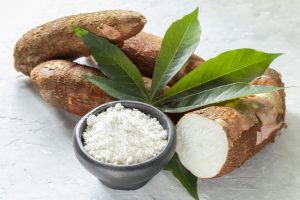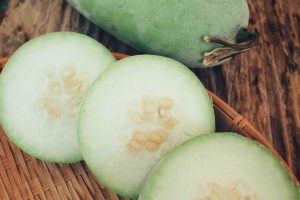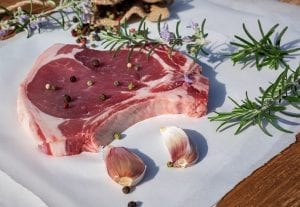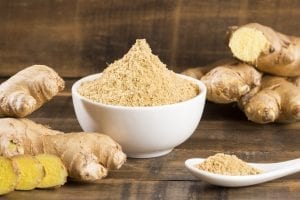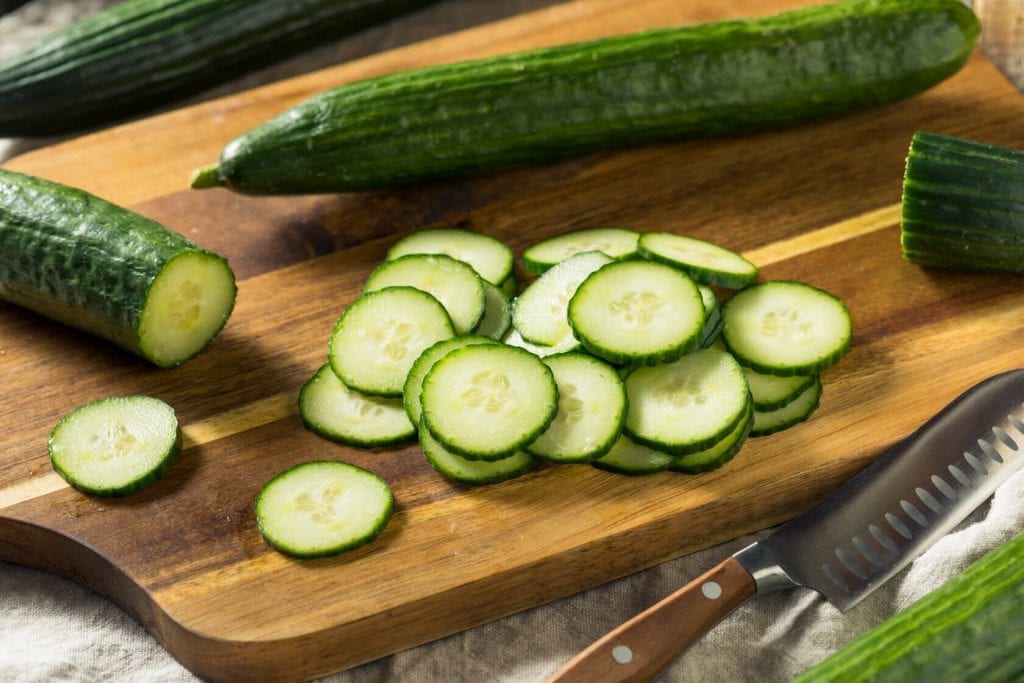
The English cucumber is a sweet, refreshing, and healthy fruit that can be easily incorporated into your diet. Simply pick one up from a grocery store or farmers’ market, chop it up, and voila: a fresh summery snack with little to no effort! Besides, it’s also a delightful ingredient for a myriad of recipes.
But do you want to know what makes it special? Stick around and find out! We’ll be breaking down everything that you need to know about the English cucumber, including what makes it different from the regular cucumber varieties.
What Is an English Cucumber?
The English cucumber (Cucumis sativus) is a kind of cucumber that’s specially bred to be an overall better version of the fruit, from its flavor, skin, and up to its seeds. It can go by many names, and some of the most common ones are hothouse cucumber, seedless cucumber, and European cucumber, among others.
In terms of appearance, the English cucumber is usually longer and thinner than the more common varieties that you’d find in the market. Each fruit is usually 14 inches long, with a diameter of around 1½ to 2 inches. You’ll instantly recognize it from the outside thanks to its ridged, dark green skin. This part is specially engineered to be as thin as possible, so you won’t have to peel it like the other cucumber types.
And it’s not just its thin skin, but what’s on the inside that makes it worth a try. Because once you cut it open, you’ll be greeted by more light green flesh than the average kind of cucumber. That’s made possible by the English cucumber’s seeds which are very small. It’s also a lot sweeter and easier to digest since it doesn’t contain much cucurbitacin, the chemical compound from the seeds that make regular cucumbers quite bitter and difficult to digest. And because its seeds are small, that also means that you won’t have to seed it before eating!
Besides having a pleasant flavor, English cucumbers are also good for you. Since they consist mostly of water, this kind has a low calorie content at 7.8 calories per ½ cup of sliced fruit. Plus, its cucumber skin contains a bunch of vitamins and minerals to help keep you healthy and strong.
READ ALSO: 30 Healthy Food Recipes That You’ll Love
English Cucumber vs Other Cucumber Varieties

There are other types of cucumber besides the English variety. Here’s how they compare to one another:
Burpless Cucumbers
The English cucumber belongs to this category. These cucumbers are characterized by their thin skins and most importantly, small seeds. As we’ve already established, smaller seeds equate to lower amounts of cucurbitacin. This apparently reduces the tendency for indigestion or “burping” after eating the fruit, hence the name “burpless.”
The Japanese and the Persian cucumbers are good examples of other types under this category. The Japanese cucumber or kyuri is a popular ingredient for fresh sushi and sashimi. It’s sweet without any mature seeds inside, but you can use it for slicing and pickling as well. Meanwhile, the Persian cucumber or sfran is good for stir fries because it can tolerate high heat. It tastes and looks quite similar to the English cucumber, but it’s usually shorter in length.
These three are quite similar overall, so you can freely use them as substitutes for English cucumbers and for one another.
Slicing Cucumbers
These are the inexpensive, standard American cucumbers that you’d find in grocery stores. Slicing cucumbers are usually short and plump, with a green skin that’s smoother, darker, and thicker than the English cucumber. They also have larger seeds, so you will have to peel and seed these fruits beforehand.
Pickling Cucumbers
As the name suggests, this is the kind that is usually used to make briny pickles. They have thin and spiny skins, and are a lot shorter compared to both the slicing and seedless cucumbers. Some examples of pickling cucumbers include calypso, Carolina, and Parisian varieties.
READ ALSO: 25 Reasons Why You Should Start Eating Real Food
Buying and Storing an English Cucumber
The English cucumber is available throughout the whole year. Check the produce section of a grocery store if you want to buy some. You can find it in farmers’ markets as well. Although, you must know that this variety is more expensive than the regular slicing cucumber.
To choose the best English cucumber, the general rule of thumb is to go for the firm ones. Gently press and feel the whole cucumber for soft spots. Start at the ends since this is usually where the fruit first starts to decay. If it’s mushy or if cucumber juice is already oozing out, then it’s possible that the cucumber must have already gone bad.
Most of the time, this store bought fruit is packaged in plastic or shrink wrap. The seedless cucumbers have delicate skins after all, and this extra layer of protection helps extend its shelf life substantially. Keep it wrapped in the refrigerator until you’re ready to use it, and it should stay good for up to a week tops.
Best English Cucumber Recipes to Try
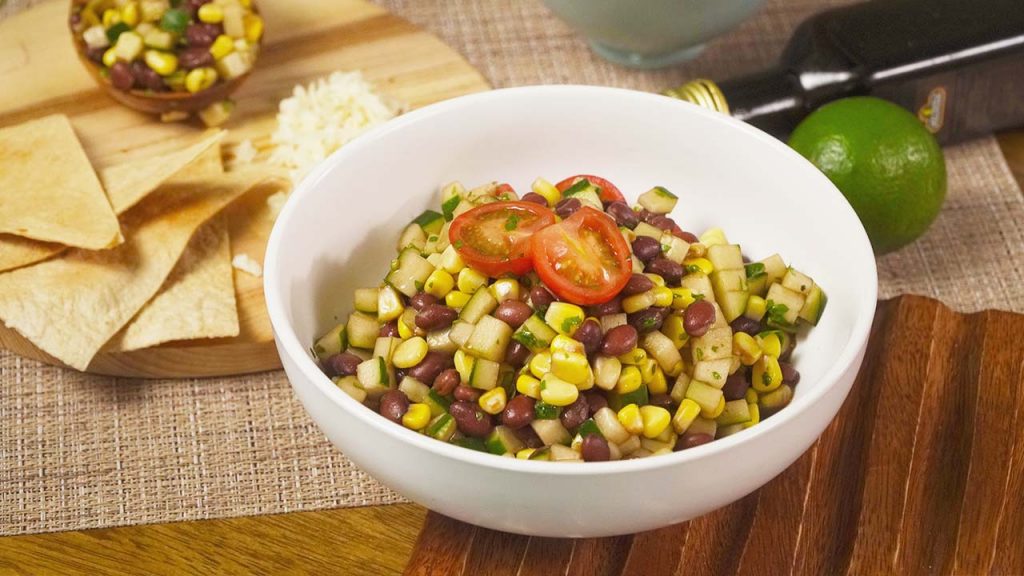
English cucumber slices are crisp, refreshing, and perfect to use for salads, appetizers, side dishes, and can even be eaten raw on their own. Check out the recipes with cucumbers below for some cooking inspiration:
- Refreshing Corn, Black Bean and Cucumber Salad – Toss the sweet and juicy cucumber with corn, black beans, tomatoes, tortilla chips, and cheese to make this healthy and delicious salad.
- Creamy Cucumber Salad – Cucumber slices and chopped red onions are tossed in tangy sour cream to achieve this creamy salad. Skip the seeding or peeling part altogether if you’re using burpless varieties.
- Greek Cucumber Cups – Cucumbers are cored and stuffed with classic Greek salad ingredients like fresh feta cheese, cherry tomatoes, and olives to make this fun dish.
- Flavorful Tzatziki – Chop up an English cucumber and toss it into this creamy Middle Eastern dip for veggies, chips, bread, and so much more!
